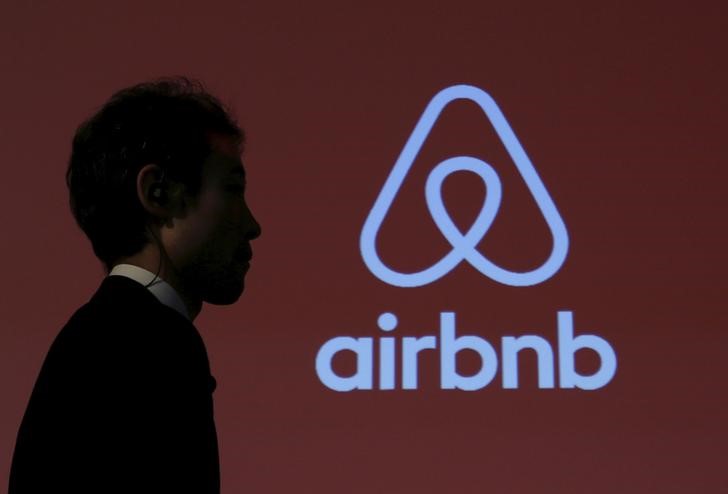This post was originally published on this site
https://i-invdn-com.investing.com/news/LYNXNPEC5S097_M.jpg
On Thursday night, Wells Fargo initiated coverage on the stock with an Underperform rating and a price target of $99, suggesting a downside of 15%. Within hours, analysts at Jefferies published a note saying the stock remains “attractive.” Jefferies has a Buy rating on the stock and a $140 price target.
Wells Fargo and Jefferies aren’t the only firms with conflicted views on Airbnb. Overall, there are 18 “Buy” ratings on the stock, 20 “Holds”, and 5 “Sells,” including the new Underperform rating from Wells Fargo.
The Wells Fargo note warned of waning share gains compared to hotels.
“We believe [average daily rate] inflation is likely a contributing factor driving moderating market share gains. We estimate that ABNB ADRs are +38% vs. 2019, significantly ahead of system-wide ADRs at MAR/HLT (+11%/+9%) and our estimate of platform-wide hotel ADR at BKNG (+19%),” wrote Wells Fargo analysts.
They added, “Our consumer survey indicated that of adults who haven’t stayed at an alternative accommodation property over the last 12 months, the most common reason cited was that they were able to find a hotel cheaper (of adults who stayed at an alternative accommodation instead of a hotel, the explanation was the same, the property was cheaper than the comparable hotel)”
On the other hand, Jefferies thinks overall travel demand will remain strong through 2024.
Jefferies analysts explained, “Dominant share in the fastest growing travel vertical (i.e., alternative accommodations) provides ABNB a long runway for attractive growth. Having a large competitive moat also gives flexibility to drive take rate higher through ancillary products (services + promoted listings) or eventually pursue a fee increase.”
Shares of Airbnb declined overnight following the new Underperform rating at Wells Fargo, only to rebound Friday morning and eventually surge over 5%.
The spike Friday morning was tied in part to data from analytics firm YipitData suggesting stronger-than-expected room volumes in the second quarter, shifting the debate in favor of the bulls, for now.


